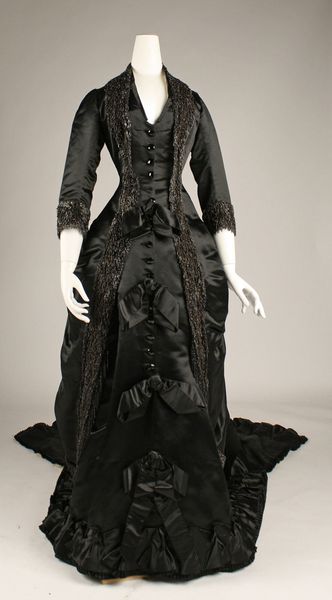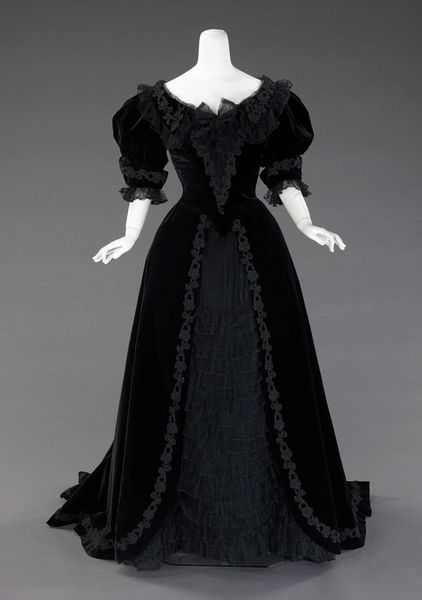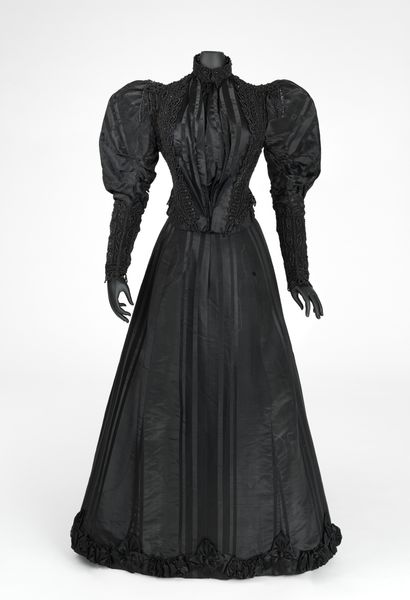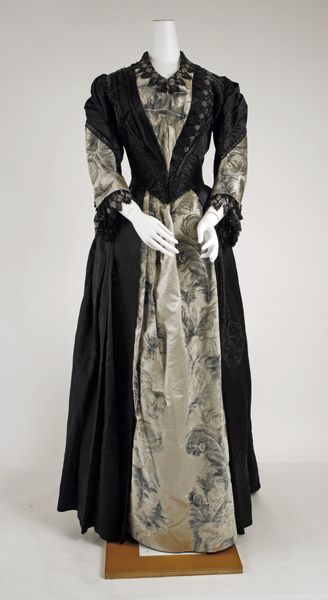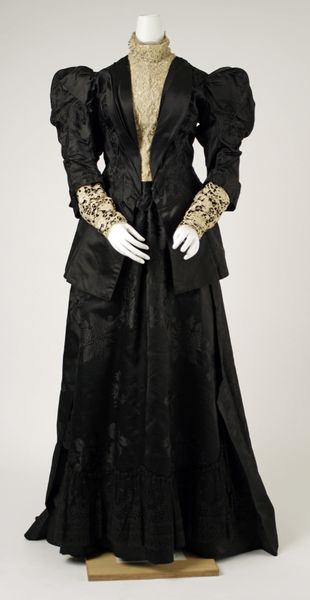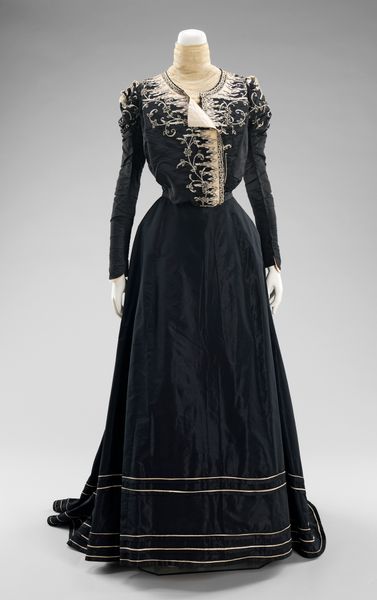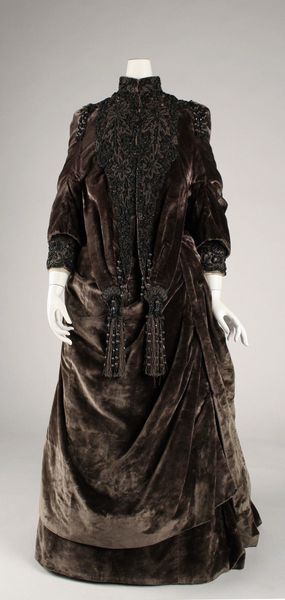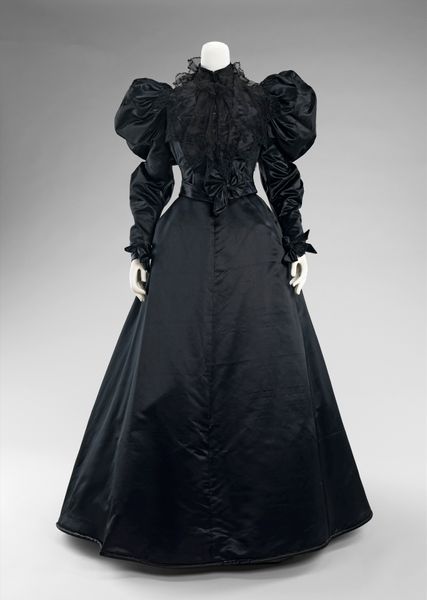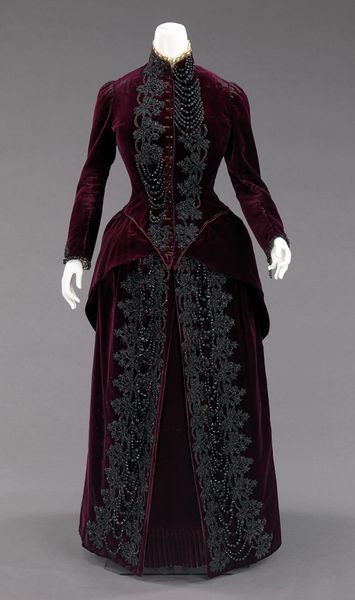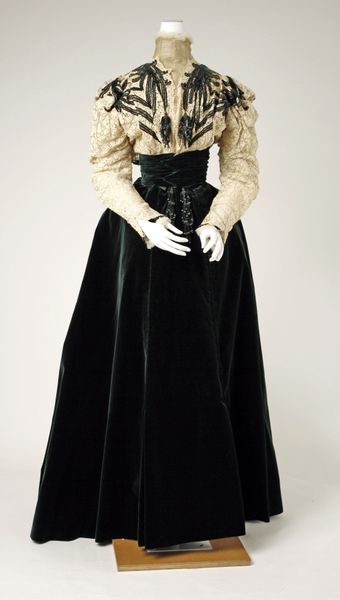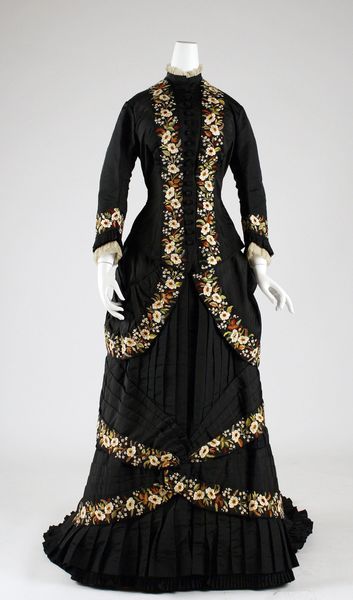
textile
#
fashion design
#
fashion mockup
#
textile
#
fashion and textile design
#
fashion based
#
historical fashion
#
wearable design
#
clothing theme
#
costume
#
wedding dress
#
clothing design
#
bridal fashion
Copyright: Public Domain
Curator: Here we have "Dress," dating to 1887, crafted by White Howard & Co. currently held at the Metropolitan Museum of Art. Editor: It’s striking. The severe black silk, the high neck… it projects a very intense formality. Curator: Absolutely. This era saw specific mourning practices heavily influencing fashion. Black attire became associated not only with loss but also with dignity and social standing. Widowhood, especially, granted women certain visibility within very specific social boundaries. Editor: Tell me more about how structure contributes to that effect. The bodice is so structured, with that wasp waist. And look at how the lace seems strategically placed, almost mathematically arranged, yet also somehow softens that rigidity. It is also incredible the use of different textiles in just one design: satin, lace and beaded accents. Curator: Exactly. The dress reinforces prevailing ideals of feminine beauty and the constricted roles women occupied. Corsetry molded the body into an artificial shape while also restricting physical movement and autonomy, all in a garment which demands not only specific behavioral choices but also silent expectations of conduct from the wearer. The ornamentation, particularly the delicate lace and beads, offers a contrast. There is an exploration and juxtaposition between structure and freedom in the materials alone. Editor: So true. It’s an intersection of both limitation and self-expression through details. The details, however elaborate, cannot avoid speaking to its inherent limitations: not easy to wash, definitely constricting... Curator: Garments such as this become artifacts not just of aesthetic taste, but documents of how societal pressures manifested through wearable art. A potent symbol of power dynamics during the late 19th century. Editor: Well, I am now perceiving beyond the material presence. It leaves one with a richer, far more thoughtful sense of design itself. Curator: And I am also appreciating the nuances in design, especially concerning the ways they express complex societal narratives through time.
Comments
No comments
Be the first to comment and join the conversation on the ultimate creative platform.
